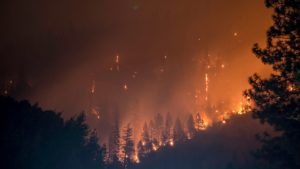Holistic Management 7: Ecosystem Management Tools
Three weeks ago, I explored ecosystem processes as part of holistic management planning using Allan Savory’s template for decision making.
This week I’m looking at the ecosystem process tools I might use to manage my writing business plan. Savory defines them as human creativity, money and labor, technology, fire, rest, and living organisms.
Leaving aside all this terminology for a minute, how do we manage our lives and environment? I’ve just been housecleaning with a vacuum (requiring electricity), a dust rag, a broom and dustpan, bleach, vinegar, cleanser, rags, Windex and paper towels. These tools don’t represent much money, but I do need to use labor to optimize them.
Now I’m using my laptop and a wireless Internet connection. These technological tools require money, in addition to my creativity and labor.
Although Savory’s focus is on land management, his model continues to lend itself to virtually any kind of management situation, as though all our human endeavor is only a sidestep away from holistic land management. This, of course, is the case, as there can be no human endeavor if we destroy the planet. Whoever we are and whatever we do, our choices and actions have consequences for Earth.
I’m using the tool of creativity as I work with this model and explore all the levels and pieces. Supporting my own creativity as a writer is at the heart of my purpose.
Savory proposes that holistic management planning will always require at least one of the tools of money and labor. Now we come up against the limitations of our resources. We might have money, but no time, energy, or willingness to labor. Or, we might be working as hard as we can, but have no financial resource. Most of us have a mixture of the two, but how do we know how to use our resources of money, time and energy most effectively? This is one of the questions lying at the core of my own situation.
I suspect many of us operate out of scarcity rather than abundance, out of a sense of limitation rather than possibility. Our lives are busy and our days full. We have responsibilities and deadlines. We respond to one demand after another. We fight traffic, the clock, and an unending stream of messages, notifications, beeps, rings, and buzzers.
Using rest as a tool seems counterintuitive. If we’re already running as fast as we can and we can’t keep up, the sky will certainly fall if we make a choice to stop and sit still, even for a few minutes. However, I know from my own experience none of our efforts are sustainable without rest. We can’t assess our resources fully on the run. We can’t think intelligently about our measure of money and labor and where to use them most effectively, and we can’t maintain juicy creativity without regular and adequate rest.
Fire is another tool we use to manage land, and I apply it metaphorically to my own situation. Natural creative forces like fire are terrifying, and we usually focus on their destructive aspect, forgetting destruction always opens the door to something new. Sometimes we use such a force deliberately, and sometimes not.
If we are managing humans rather than land, events such as divorce, death, a spiritual crisis, a health crisis, or a wholly unexpected choice can have the same effect as a force of nature like fire. In a very short time, everything changes and we no longer recognize our landscape and landmarks. We feel terror and loss. We feel disempowered. At some point, we begin to shape a new life, adapt to a new job, put roots down in a new place, or learn how to inhabit a new set of circumstances.
Technology is the tool I’m least comfortable with. Unfortunately, in these days it’s a very important tool for an aspiring writer, maybe even an essential one. As I wrote last week, I’m being inexorably forced to make friends with it and develop some skill in using it. Sigh.
Lastly, and closest to the heart of Savory’s work, is the activity of other organisms as an ecosystem management tool. Collaboration. Cooperation. When organism meets organism, both are impacted. It doesn’t matter how large they are, or if they have a Latin name, or if we understand the full nature of that impact. It doesn’t matter if one organism is a cow and one a forb. It doesn’t matter if one is a human being and the other a virus. Life interacts with life, and both lives change.
The long tale of evolution is made up of infinite stories of these interactions.
As humans, our cultures, languages, stories, knowledge, artistic expression, and belief systems have given us a social context – many wholes making up the whole of humanity across time. Social context is hugely influential and powerful, as evidenced by the phenomena of social contagion and tribal shaming.
My interaction with all the life around me, past and present, human and nonhuman, is my most powerful and complex tool for managing my business writing plan. Without my social shaping by family and culture, I would have nothing to write about. Without collaborating with others who have skills, knowledge, and power I lack, I cannot succeed. Without the inspiration and support from those around me, I would not be able to fuel my creativity sustainably.
Tools help us shape and manage our lives. We learn to make them, care for them, and wield them effectively. As humans, we have a long history of developing tools to help us master our world, and human endeavor often fails if we don’t have and know how to use the proper tools.
Questions I ask myself: What tools do I need to build a sustainable management plan? Who will teach me to use them effectively? How much money and labor will be necessary in order to use my tools well?
And what about people? People are not tools. How can I most effectively interact, collaborate, and cooperate with the people around me in order to work towards my goal of creating a more secure, sustainable life as a writer?




